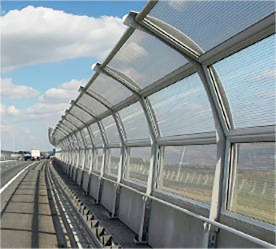The Importance of Structural Steel Grating in Modern Construction
Structural steel grating is an essential component in modern construction and industrial applications, providing not only strength and durability but also versatility and safety. This innovative material is widely recognized for its ability to support heavy loads while allowing for effective drainage and ventilation, making it a preferred choice in various sectors such as manufacturing, commercial buildings, and infrastructure projects.
One of the primary advantages of structural steel grating is its high strength-to-weight ratio. Constructed from high-quality steel, the grating can withstand significant loads without compromising structural integrity. This strength makes it suitable for applications such as walkways, platforms, and staircases, where safety and support are paramount. The open design of the grating also minimizes the amount of material used while maintaining a robust structural framework, helping to reduce costs and construction time.
In addition to its mechanical properties, structural steel grating is also resistant to environmental factors
. Coated with protective finishes, such as galvanization, it can withstand corrosion, rust, and other forms of deterioration over time. This resilience makes it an ideal choice for outdoor applications, such as in wastewater treatment plants, chemical facilities, and offshore platforms, where exposure to harsh conditions is common.structural steel grating

Moreover, the design flexibility offered by steel grating is another reason for its widespread adoption. It is available in various sizes, patterns, and load-bearing capacities, allowing it to be customized to meet specific project requirements. This adaptability makes it suitable for both new constructions and renovations, offering architects and engineers the freedom to innovate while ensuring functionality and safety.
Safety is a paramount consideration in any construction project, and structural steel grating contributes significantly to maintaining safe working environments. The open spaces within the grating allow for efficient drainage, preventing water accumulation that could lead to slips and falls. Additionally, the design facilitates better visibility and airflow, enhancing user experience and comfort. Factories and industrial facilities benefit from this feature, as it minimizes the risk of accidents caused by waterlogged surfaces or poor ventilation.
Another crucial aspect of structural steel grating is its ease of installation. Typically, it can be prefabricated to specific dimensions, allowing for quick and efficient on-site assembly. This reduces construction time and labor costs, contributing to the overall efficiency of the project. Furthermore, it can be secured using various methods, such as welding or bolting, depending on the requirements and environmental conditions.
In summary, structural steel grating plays a vital role in contemporary construction and industrial sectors. Its high strength-to-weight ratio, resistance to environmental degradation, design flexibility, safety benefits, and ease of installation make it an invaluable component in various applications. As the construction industry continues to evolve, the demand for materials that not only perform well but also enhance safety and efficiency will only increase. Steel grating's unique properties position it as a leading choice for engineers and architects who prioritize both innovation and reliability in their projects. With its proven track record, structural steel grating is likely to remain a cornerstone of modern construction for years to come.
-
The Strength and Versatility of Aluminum Expanded Metal Mesh
NewsJun.10,2025
-
Safety Guards and Machine Enclosures Using Expanded Mesh
NewsJun.10,2025
-
Performance with Round Hole Perforated Mesh in Wall Panels
NewsJun.10,2025
-
How Steel Grating Trench Covers Distribute Weight Efficiently
NewsJun.10,2025
-
How Deck Mesh Railing Enhances Backyard Aesthetics
NewsJun.10,2025
-
Comparing Bar Thickness and Spacing in Steel Grating
NewsJun.10,2025
Subscribe now!
Stay up to date with the latest on Fry Steeland industry news.

